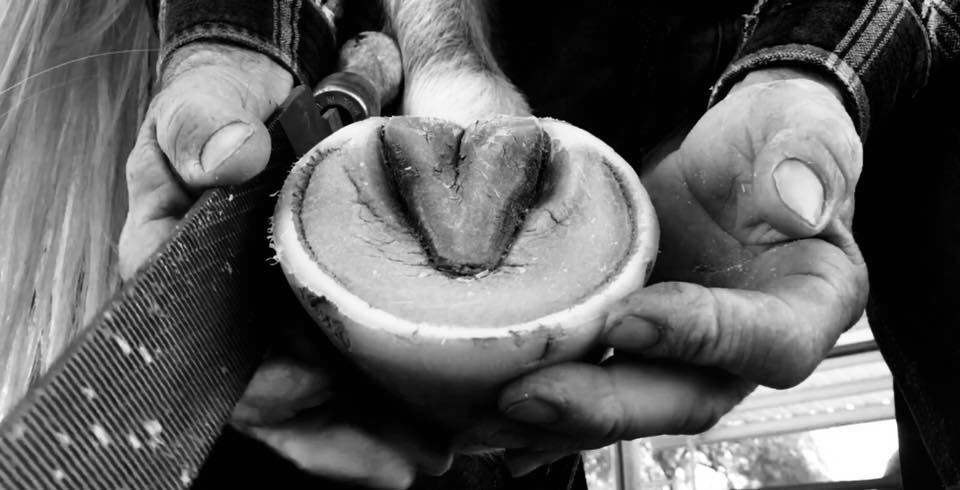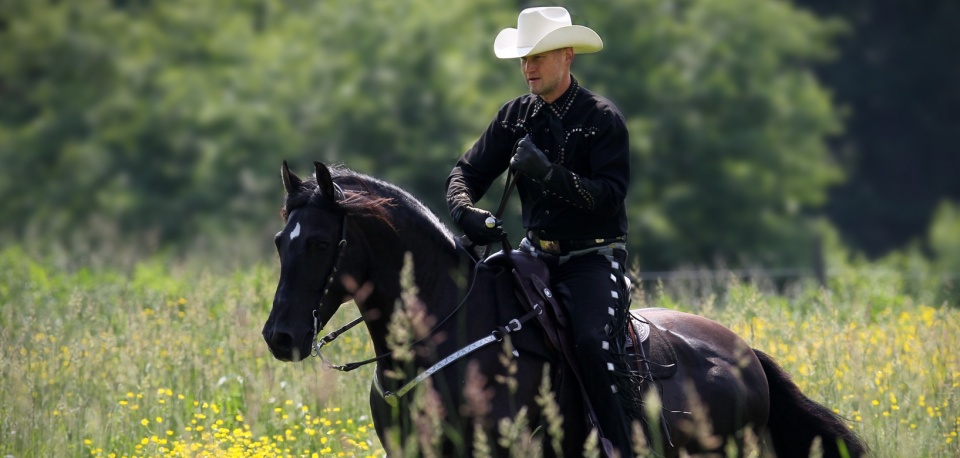This is an update on a horse I did a post about approximately 5 months ago. He’s been on my schedule for years. He was acquired by one of my clients after being diagnosed with a neurological disease. He was being used for barrels but started falling down. After the vet’s diagnosis, the previous owner decided to euthanize. My client decided to take him on and took him home and asked me to take a look and see what I could do. He was shod all the way around but I noticed he had a pretty badly sheared heel on his right front. I pulled his shoes and we scheduled him for 1 week trims. She had no intention of ever riding him in the beginning, but he ended up being her husband’s trail horse for the next 8 years.

It took a couple of years of 1 week trims to reduce the majority of the shear on the right fore. Then another couple of years on a 2 week trim schedule to stabilize the hoof balance and keep the foot from relapsing ( tissue memory ). During the following two years we were able to maintain slight steady progress on a 3 week schedule. Over the last two years these clients have been riding less and they tend to stretch the schedule out to 6 weeks. As a farrier, it’s hard to tell people what to do with their horses until there’s an obvious problem. Sometimes you just have to wait on the lesson. My clients had spent so much money over the years on this horse ( and their 4 others ) and I’d pestered them for so many years about diet, footing, and movement…I just couldn’t bring myself to put my foot down about the lax schedule they had been on. Then last November I picked up this horse’s right front and noticed that the lamina had separated and almost half of the wall had broken away. I snapped the top photo and sent it to my client. Without any other questions, she immediately asked me if I’d put the horses back on a 2 week schedule. The middle photo was 6.5 weeks later and the bottom photo was from today ( 5 months later ).
These clients have been feeding only grass hay and AZ Copper Complete for over a decade ( one of the only clients of mine who use a copper supplement ). They followed my suggestion of building a small track system and filling it with 3-4″ of coarse sand starting over a decade ago. The only thing that changed for this horse was the trim frequency. In addition to growing out the separation, another added benefit of reinstating the frequent trim is that the medial heel ( right side of photo )
Is more symmetrical to the lateral one now.
This was the same foot that had the sheared heel resulting in a misdiagnosis by a vet that almost got this horse euthanized 8 years ago.
*I should add that this horse wasn’t showing signs of lameness at the time that the top photo was taken, and that even though it seemed like it, this foot didn’t all of a sudden fall apart. It took a couple of years of infrequent trims to weaken the lamina before it lost connection.
David Landreville is a Hoof Care Practitioner focusing on Lameness prevention and Rehabilitation in Tuscon, AZ. Visit David on Facebook for more informational posts like this, or to learn about educational workshops held by David. Facebook >



